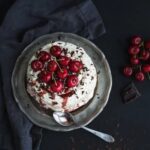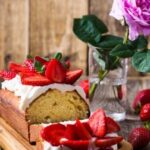Cookie cakes have become a popular treat for any occasion, and the key to making them truly memorable lies in their eye-catching decorations. Whether it’s for a birthday celebration, holiday gathering, or just a special sweet treat, cookie cakes offer a unique canvas for creativity and personalization.
In this article, we will explore the art of decorating cookie cakes and provide you with the knowledge and techniques to create stunning designs that are as delicious as they are visually appealing.
Understanding the basics of cookie cake decorations is essential for bringing your creative vision to life. Different types of cookie cakes require specific decorations to complement their flavors and textures. From classic chocolate chip to decadent red velvet, each variety offers its own possibilities when it comes to design. Additionally, knowing which decorating tools and materials are needed will ensure that you have everything necessary to achieve your desired results.
Once you have grasped the fundamentals, mastering essential techniques is crucial for creating flawless cookie cake decorations. This includes achieving smooth icing surfaces on your cookie cakes, as well as perfecting piping and outlining techniques for intricate designs. Guided by step-by-step instructions, you’ll learn how to transform an ordinary cookie cake into a work of art that will impress both visually and tastefully.
Join us on a journey through the world of cookie cake decorations as we explore various techniques using buttercream frosting, fondant, royal icing, textured additions, and unique showstopper ideas. With expert advice from renowned pastry chefs along the way, you’ll gain invaluable tips and tricks for perfecting your skills and avoiding common mistakes. So let your creativity run wild and indulge in the joy of making visually stunning and delicious treats with our guide on cookie cake decorations.
Understanding the Basics of Cookie Cake Decorations
Cookie cakes have become an increasingly popular treat for various occasions, from birthdays to anniversaries and everything in between. One of the key elements that make a cookie cake memorable is the eye-catching decorations that adorn its surface. Understanding the basics of cookie cake decorations is essential for creating visually appealing and delicious treats that will delight everyone who tastes them.
When it comes to decorating cookie cakes, it’s important to consider the type of cookie cake and its suitability for specific decorations. Different types of cookie cakes have different textures and consistencies, which can affect how well certain decorations adhere to their surface. For example, a softer cookie cake may be better suited for a smooth icing surface, while a denser cake may work well with three-dimensional fondant designs.
To create stunning cookie cake designs, there are several common decorating tools and materials that are needed. Some essential tools include piping bags and tips for intricate designs, offset spatulas for spreading icing evenly, and various cutters and molds for shaping fondant or other decorative elements. Other materials such as food coloring gels or powders, edible glitter or luster dust, and edible markers can also be used to add vibrant colors and details to the decorations.
Understanding the basics of cookie cake decorations allows you to embark on the journey of creating beautiful treats that will impress both visually and tastefully. Whether you choose to work with smooth icing surfaces, intricate piped designs, buttercream frosting, fondant techniques, or royal icing consistency, learning these fundamental techniques will set you on the path towards mastering this sweet art form.
| Type of Cookie Cake | Suitable Decorations |
|---|---|
| Soft Cookie Cake | Smooth icing surfaces |
| Dense Cookie Cake | Three-dimensional fondant designs |
Essential Techniques for Cookie Cake Decorations
Decorating a cookie cake requires some essential techniques to ensure a visually appealing and impressive result. Whether you are a beginner or an experienced baker, mastering these techniques will take your cookie cake decorations to the next level. In this section, we will provide step-by-step instructions for creating smooth icing surfaces, achieving perfect piping and outlining techniques, and offer tips to help you create intricate designs.
Creating Smooth Icing Surfaces
One of the first steps in decorating a cookie cake is achieving a smooth icing surface. This provides the perfect canvas for your designs and creates a polished look. To achieve this, start by baking your cookie cakes until they are golden brown and completely cool. Prepare your icing of choice (buttercream, royal icing, or fondant) and begin by adding enough icing to cover the entire top surface of the cookie cake.
Using an offset spatula or a bench scraper, gently spread the icing evenly across the surface of the cookie cake. To achieve a smooth finish, hold the spatula at a slight angle and apply even pressure as you glide it across the surface. Continue this process until you have achieved an even layer of icing on the entire top surface of the cookie cake.
Perfect Piping and Outlining Techniques
Piping and outlining are essential techniques for creating intricate designs on cookie cakes. To achieve perfect piping, start by preparing your desired decorating bag with a small round tip suitable for fine details. Fill your bag with buttercream frosting or royal icing that has been thinned slightly with water to achieve a pipeable consistency.
Hold your bag at approximately 45-degree angle above your cooled cookie cake and apply steady pressure as you pipe your design onto the surface. Practice consistent pressure control to ensure even lines throughout your design.
When it comes to outlining, use either stiff royal icing or buttercream frosting that has been thickened by adding powdered sugar. This consistency will create crisp lines and prevent the icing from spreading. Place your desired tip onto your decorating bag and fill it with the stiff icing. Hold the bag at a 90-degree angle to the surface of the cookie cake and apply firm pressure as you pipe along the edges of your design.
With these essential techniques of creating smooth icing surfaces, achieving perfect piping, and outlining, you are now ready to take on any cookie cake decoration project. These steps lay a solid foundation for creating beautifully decorated cookie cakes that will impress your family and friends. Keep practicing and experimenting with different designs to further enhance your skills in cookie cake decorations.
Buttercream Delights
Buttercream frosting is a versatile and popular option for decorating cookie cakes. Its smooth texture and delicate flavor make it an ideal choice for creating vibrant colors and intricate designs. In this section, we will explore the advantages and disadvantages of using buttercream frosting for cookie cake decorations, as well as provide tips for achieving stunning results with this delicious medium.
Advantages of Using Buttercream Frosting
Buttercream frosting offers several advantages when it comes to decorating cookie cakes. Firstly, it is easy to work with, making it a great option for beginners or those who are new to cookie cake decorations. Its creamy consistency allows for smooth spreading and piping, enabling decorators to achieve clean lines and precise designs.
Another advantage of using buttercream frosting is its ability to hold shape well. This makes it perfect for creating three-dimensional designs or intricate patterns on your cookie cakes. Whether you’re looking to add delicate flowers, adorable figurines, or personalized messages, buttercream can be piped or spread in various ways to achieve the desired effect.
Tips for Achieving Vibrant Colors and Intricate Designs
To achieve vibrant colors with buttercream frosting, start by using gel food coloring instead of liquid coloring. Gel coloring is more concentrated and produces brighter hues without altering the consistency of the frosting. Add a small amount at a time until you reach the desired shade, making sure to mix thoroughly after each addition.
When it comes to creating intricate designs with buttercream frosting, having the right tools is key. Piping bags fitted with different tips allow decorators to create various effects such as dots, rosettes, stars, and more. It’s important to practice different piping techniques before working on your cookie cake to ensure precision and control.
Additionally, consider using stencils or templates to guide your design if you’re looking for symmetry or uniformity on your cookie cake. These tools can help you achieve professional-looking results and save time when it comes to creating intricate patterns or writing messages.
Fondant Fantasy
Fondant is a versatile and popular medium for decorating cookie cakes. It offers the opportunity to create intricate designs, three-dimensional figurines, and stunning patterns. In this section, we will delve into the details of working with fondant and explore its various applications in cookie cake decorations.
When working with fondant on cookie cakes, it is important to ensure that the cake is properly prepared. The surface should be smooth and level to provide a clean canvas for the fondant. Before covering the cake with fondant, it is recommended to apply a thin layer of buttercream or piping gel as a base. This base will help the fondant adhere to the surface and prevent air bubbles from forming.
To cover a cookie cake with fondant, roll out a piece of fondant larger than the size of the cake. Gently lift the rolled-out fondant with your hands or by using a rolling pin wrapped around with plastic wrap or parchment paper. Place it over the cake, starting at one edge and carefully smoothing it down over the entire surface. Use your hands or a smoother tool to remove any wrinkles or air bubbles in the fondant.
Once the cookie cake is covered in fondant, you can further enhance its aesthetic appeal by adding decorations such as cut-outs, embossed patterns, and three-dimensional figurines. To create cut-outs and embossed designs with fondant, use small cookie cutters or special embossing tools specifically designed for this purpose. These tools will produce clean and precise shapes that can be easily positioned on top of the fondant-covered cookie cake.
In addition to cut-outs and embossed patterns, you can also make three-dimensional figurines using fondant. Start by shaping small amounts of colored fondants into individual parts of your desired figurine – such as arms, legs, body, head – before assembling them together.
You can add intricate details and textures to the figurines using food-safe brushes and edible color dust or gel. Once the figurine is complete, carefully position it on the cookie cake using a small amount of water or edible glue to secure it in place.
Working with fondant opens up a world of possibilities for cookie cake decorations. Its pliability and ability to hold intricate shapes make it a favorite among bakers and decorators alike. Whether you’re creating a beautiful patterned surface or crafting an adorable fondant figurine, fondant allows you to bring your creative vision to life on cookie cakes.
| Technique | Description |
|---|---|
| Covering a Cookie Cake with Fondant | Roll out fondant larger than the size of the cake and gently place it over the cake, smoothing it down. |
| Adding Cut-outs and Embossed Patterns | Use small cookie cutters or embossing tools to create clean shapes and designs on top of the fondant-covered cake. |
| Making Three-Dimensional Figurine | Shape different colored fondants into parts of the figurine before assembling them together on the cake. |
Mastering Royal Icing for Cookie Cake Decorations
Royal icing is a versatile and popular choice for decorating cookie cakes. It is made from egg whites, powdered sugar, and a touch of lemon juice, which creates a smooth and glossy finish that hardens when dried. Mastering the art of royal icing can take your cookie cake decorations to the next level.
To create a flawless royal icing consistency for cookie cakes, it’s important to follow the correct recipe and ratios. Start by separating the egg whites from the yolks and whisk them until they become frothy. Gradually add sifted powdered sugar and continue whisking until stiff peaks form. A few drops of lemon juice can be added to give the icing a desirable flavor.
Once you have achieved the right consistency, it’s time to decorate your cookie cake with beautiful and delicate royal icing designs. Royal icing can be used for outlining, flooding, or creating intricate details on your cookie cake. To achieve precise lines and patterns, transfer the royal icing into piping bags fitted with different sizes of tips or couplers.
To outline your design, use a small round tip to pipe an outline around the edges of your cookie cake. This will keep the flooded icing contained within these boundaries. Allow the outline to dry before flooding the inside with thinner royal icing using a larger round tip or even just snipping off a small portion of a piping bag without any tip attached. Gently spread the icing with an offset spatula or toothpick, making sure it reaches all edges.
To create beautiful designs with royal icing, you can use various techniques such as wet-on-wet marbling or brush embroidery. Wet-on-wet marbling involves adding drops of different colored icings onto wet flooded areas and then using a toothpick or skewer to swirl them together for a stunning effect. Brush embroidery involves using a soft paintbrush dipped in thinned royal icing to create delicate lace-like patterns on top of flooded areas.
Mastering royal icing opens up a world of possibilities for creating intricate and visually appealing cookie cake decorations. By following the right techniques and practicing, you can achieve professional-looking results that will impress your friends, family, or clients. Remember to have fun and embrace the creativity of decorating with royal icing.
Tips and Tricks for Adding Texture and Dimension to Cookie Cake Decorations
Adding texture and dimension to cookie cake decorations can take your creations to the next level and make them stand out. Here are some tips and tricks to help you achieve stunning results:
- Embossing: One way to add texture to your cookie cake is by using embossing techniques. You can use textured rolling pins or embossing mats to create patterns on the surface of the cookie cake. This adds depth and visual interest to the design.
- Stenciling: Stenciling is a popular technique for adding intricate patterns or designs to cookie cakes. It involves cutting out a design from a stencil, placing it on top of the cookie cake, and then dusting or airbrushing edible powder or food coloring over it. This creates a beautiful, detailed pattern with minimal effort.
- Brush embroidery: Brush embroidery is a technique that gives cookie cakes a delicate, lace-like appearance. It involves piping royal icing onto the surface of the cookie cake in a specific pattern, then using a damp brush to gently blend out the edges, creating a soft, feathery effect.
- Texture mats: Texture mats are versatile tools that can be used to create different textures on your cookie cakes. They can be used with fondant or buttercream frosting to add patterns such as quilted, wood grain, or stone textures.
- Edible decorations: Adding edible embellishments such as sprinkles, sugar pearls, edible glitter, or even fresh fruits and flowers can instantly elevate the look of your cookie cake. These decorations not only add texture but also provide visual interest and make your creation more appealing.
Remember, practice makes perfect when it comes to adding texture and dimension to your cookie cake decorations. Don’t be afraid to experiment with different techniques and combinations to find what works best for you. With time and patience, you’ll be able to create visually stunning and delicious treats that will impress everyone who sees them.
Resources Needed for Adding Texture and Dimension to Cookie Cake Decorations
- Textured rolling pins or embossing mats.
- Stencils and food-safe brushes or airbrushes.
- Edible powders or food coloring for stenciling.
- Piping bags and tips for brush embroidery or piping techniques.
- Texture mats for fondant or buttercream frosting.
- Edible decorations such as sprinkles, sugar pearls, edible glitter, fresh fruits, and flowers.
Showstopper Ideas
Cookie cakes are not only a delicious treat, but they also provide the perfect canvas for creating unique and creative decorations. In this section, we will explore some showstopper ideas that will elevate your cookie cake to the next level.
One idea for a unique cookie cake decoration is to create a “painted” effect using edible food coloring. This technique involves mixing food coloring with a small amount of vodka or clear extract, such as lemon or almond, to create a paint-like consistency.
Use different colors and brushes to create beautiful designs on the surface of your cookie cake. Whether you want to make a watercolor-inspired masterpiece or recreate a famous work of art, this painting technique adds an artistic touch to your creation.
Another showstopper idea for cookie cake decorations is to incorporate edible flowers or floral designs. You can use fresh flowers that are safe for consumption, such as pansies or violets, as long as they are pesticide-free. Gently press the flowers onto the icing of your cookie cake for an elegant and natural look. Alternatively, you can use edible flower cutters and molds with fondant or gum paste to create intricate floral designs.
For those looking for a more whimsical approach, consider transforming your cookie cake into a three-dimensional sculpture. For example, you can shape the cookie dough into an animal shape and decorate it accordingly. Use buttercream frosting, fondant, or even chocolate ganache to add details such as fur texture or facial features. This showstopper idea is perfect for children’s parties or themed events where you want your cookie cake to take center stage.
These are just a few showstopper ideas for unique and creative cookie cake decorations. Remember, the possibilities are endless when it comes to decorating cookie cakes – let your imagination soar. Whether you choose one of these ideas or come up with your own, have fun experimenting and creating visually stunning and delicious treats that will wow your friends and family.
Expert Advice
Decorating a cookie cake may seem like a daunting task, but with a few tips and tricks from the professionals, you can achieve perfect results every time. In this section, we will explore expert advice from renowned pastry chefs on how to decorate cookie cakes like a pro.
One of the most important tips highlighted by experts is the need for proper planning and preparation. Before starting any decoration work, it is crucial to have a well-thought-out design in mind. Consider sketching your design on paper or using design software to ensure that you have a clear vision of what you want to achieve.
When it comes to applying icing or frosting on your cookie cake, experts recommend using an offset spatula or a palette knife for smooth and even coverage. Start with a thin layer of frosting as your base and allow it to set before adding additional layers or decorations. This will help prevent crumbs from getting mixed into the icing and ensure a clean finish.
Another valuable tip shared by professionals is the importance of patience and practice when it comes to intricate designs. If you are new to piping or outlining techniques, start with simple designs and gradually work your way up to more complex patterns. It is also helpful to invest in good quality decorating tools such as piping bags, couplers, and nozzles for better control and precision.
In addition to these tips, professional pastry chefs emphasize the significance of knowing when to take breaks while working on cookie cake decorations. Spending long hours hunched over your creations can lead to fatigue and mistakes. Taking short breaks allows you to refresh your mind and eyes, ensuring better focus and accuracy when working on intricate details.
By following these expert advice from experienced pastry chefs, you can elevate your cookie cake decorating skills and create stunning works of art that are not only visually appealing but also deliciously satisfying. Remember, practice makes perfect, so don’t be afraid to experiment and have fun along the way.
Conclusion
In conclusion, cookie cake decorations offer a fun and creative way to make any occasion more memorable. By understanding the basics of cookie cake decorations and learning essential techniques, anyone can achieve stunning results. Whether using buttercream frosting, fondant, or royal icing, there are endless possibilities for creating vibrant colors and intricate designs.
Adding texture and dimension to cookie cake decorations is another layer of creativity that can elevate the final product. Exploring different techniques and utilizing edible embellishments can take a simple cookie cake to a showstopping masterpiece. With unique and creative ideas for personalized decorations, there is no limit to the artistic expression that can be achieved.
It is important to remember that decorating cookie cakes is not just about achieving visual appeal but also about enjoying the process. Experimentation and having fun with designs is key to finding one’s own style and creating truly unique creations. The joy and satisfaction that come from sharing visually appealing and delicious treats with loved ones cannot be understated.
Frequently Asked Questions
How to decorate a cookie cake?
Decorating a cookie cake can be a fun and creative process. To start, you’ll want to prepare your desired icing or frosting. Whether it’s buttercream, royal icing, or ganache, make sure it’s at a consistency that is spreadable but not runny.
You can then use an offset spatula or a piping bag fitted with a tip to apply the frosting onto the cookie cake’s surface, creating smooth or textured patterns as desired. Adding sprinkles, crushed nuts, chocolate chips, or edible decorations is a great way to add visual interest and additional flavor to the cookie cake. For more intricate designs, you can also use small fondant decorations or piping detailed shapes with different colors of frosting.
How do you attach cookies to a cake?
Attaching cookies to a cake can be done in various ways depending on the size and weight of the cookies as well as personal preference for presentation. One common method is using royal icing as glue: pipe small dots of thickened royal icing onto the backside of each cookie before pressing them gently onto the sides or top of the cake.
Alternatively, melted chocolate or even caramel sauce can act as adhesive agents when applied thinly to either side of the cookie before positioning it onto the cake’s surface. Another approach is to insert wooden skewers into larger cookies and then carefully push them into the cake for added stability if desired.
How long does a cookie cake stay fresh?
The freshness and shelf life of a cookie cake depend on several factors such as storage conditions and ingredients used in its preparation. Generally speaking, if properly stored in an airtight container at room temperature (or refrigerated if desired), a cookie cake will remain fresh for about 3-5 days after baking.
However, keep in mind that over time cookies may lose some of their initial crispness if exposed to air; nevertheless, they should still be enjoyable until around day 5 without any significant quality decline. Additionally, note that highly perishable fillings like fresh fruit or dairy-based frostings might shorten the overall freshness of the cookie cake, so take this into consideration when planning and consuming.

Welcome to my blog about home and family. This blog is a place where I will share my thoughts, ideas, and experiences related to these important topics. I am a stay-at-home mom with two young children. I hope you enjoy reading it! and may find some helpful tips and ideas that will make your home and family life even better!





